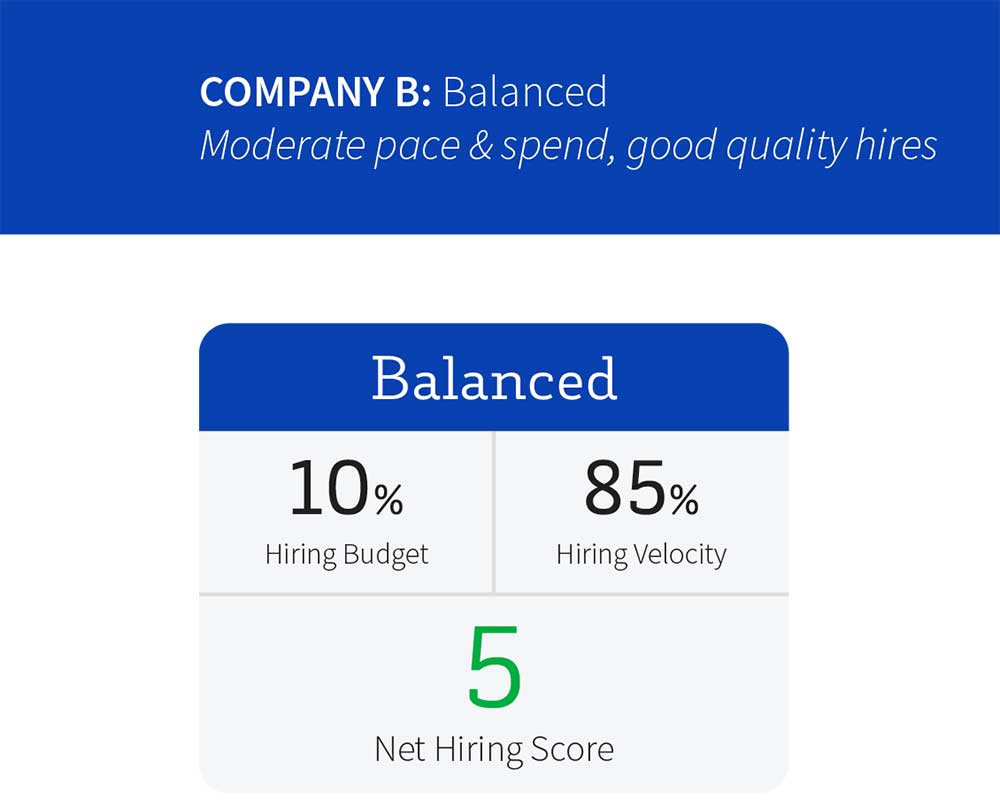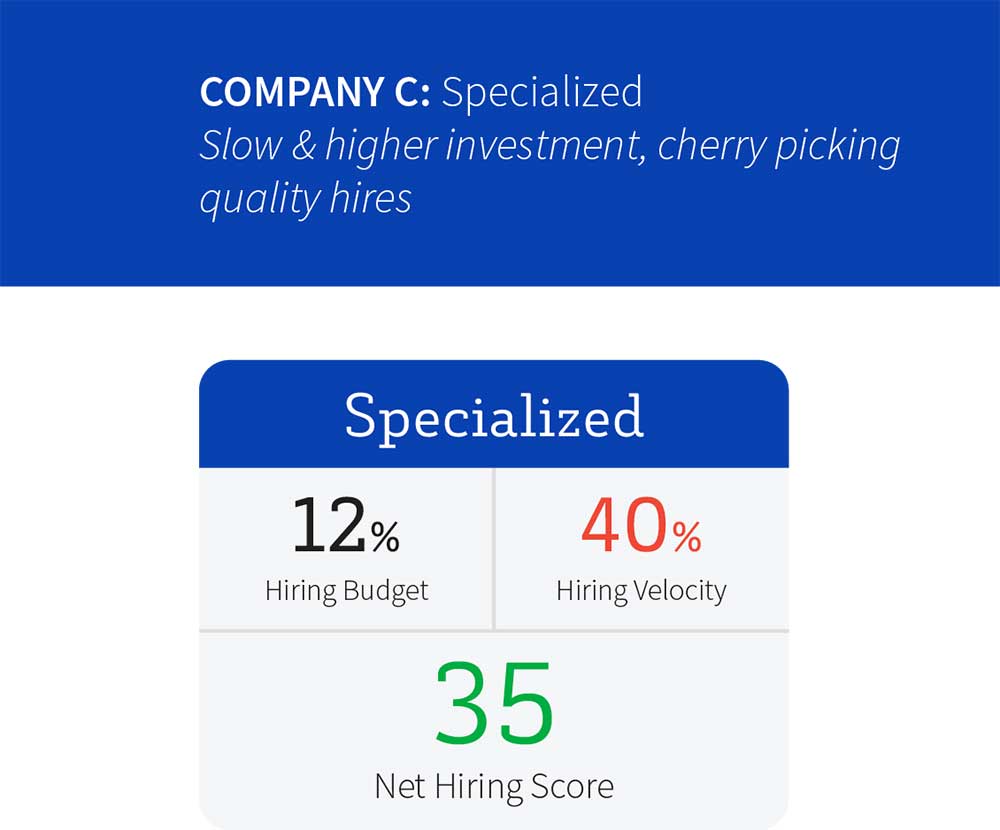Continue Reading
Hiring Success Scorecard
Now that we have defined the new metrics needed to measure your business’ talent acquisition function, the next step is to organize the data around Hiring Budget, Hiring Velocity, and Net Hiring Score into what we call the Hiring Success Scorecard.
In order to convince internal stakeholders and company leadership of the value of recruiting—and to make a case for the resources your organization should invest in hiring amazing talent—you will need to leverage your unique scorecard. This crucial resource illustrates current recruiting performance and drives future talent acquisition strategy.
Reporting <> Decision Making
Built around the metrics of Hiring Budget, Hiring Velocity, and Net Hiring Score, the Hiring Success Scorecard informs you of the health and impact of your talent acquisition function, while also driving future recruiting strategy.
These scorecards reflect three types of hiring strategies adopted by SmartRecruiters’ customers:

Company A
The first example is an apparel retailer (Company A) that prioritizes faster hiring cycles. They experience high turnover rates for a large number of junior-level employees because speed aligns with their business model and is prioritized over candidate fit. We see some customers in the food services and hospitality industries take on a similar approach.
After seeing their initial scorecard results, Company A might choose to invest more money into job advertising channels that yield better conversions in addition to a better employee referral program, as well as more engaging outreach campaigns through local university events. Further investment in recruitment headcount also reduces the burden placed on other hiring managers, allowing for more flexibility to select stronger candidates.
On the process side, Company A could spend more time screening and evaluating candidates with skills assessments and job-specific scorecards. This would provide hiring managers with benchmarks for comparison and enable them to gauge successful employees and boost the overall quality of applicants and hires.
A combination of these tactics would help improve the flow and quality of candidates, thereby boosting Company A’s Net Hiring Score.

Company B
The second scorecard example reflects a North American metal recycling business (Company B). They prioritize filling their lower-skilled positions quickly so they can allocate more of the hiring budget to attracting candidates for highly-skilled positions. Company B has solid Hiring Velocity and an optimized recruiting budget.
To improve their overall Net Hiring Score, Company B might begin by consolidating their advertising budget. By reducing the spend on jobs that receive a high number of applicants, Company B can reallocate that budget towards a branding campaign, as well as a better career site. By improving their employer branding, Company B betters their candidate experience from first touch to hire, resulting in more satisfied employees and a higher NHS.

Company C
The third scorecard example reflects a major tech firm in Silicon Valley (Company C). Due to fierce local competition, they lack qualified candidates for their hard-to-fill software development and senior leadership roles. Most of these candidates demand higher salaries and aren’t actively looking for work. Competitive industries like information technology, health services, and finance tend to experience similar challenges.
If Company C wanted to increase Hiring Velocity, they could invest in ongoing campaigns to increase hiring manager response rates and decrease response times. Introducing an AI solution could accelerate accurate and unbiased screening so the hiring team has more time to focus on interviewing and engaging with candidates. Automating tedious steps like in-line assessments, auto-triggered background checks, e-signatures, etc. reduces friction in the less value-added hiring tasks, creating smoother and faster workflows.
Driving future business choices means looking at past performance through the lens of Hiring Budget, Hiring Velocity, and Net Hiring Score. With all three organized into one scorecard, this elevates the conversation around recruiting to the executive level. Additionally, this asset empowers HR and TA leaders to drive more strategic conversations around hiring in comparison to their competitors.
The KPIs contained within the Hiring Success Scorecard provide actionable insight to executive leadership and are instrumental in motivating them to invest in recruitment transformation. This makes your Hiring Success scorecard an important resource to leverage when convincing executive leadership to turn recruiting into something more strategic and competitive.